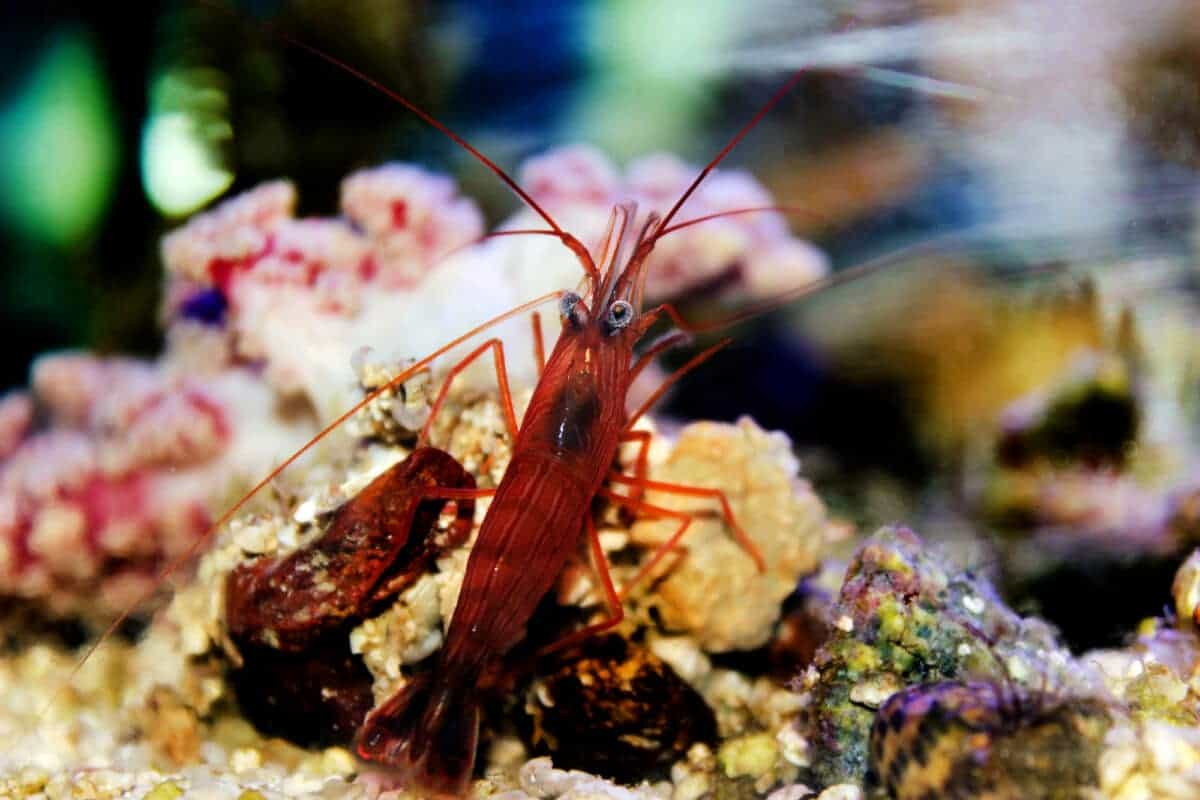The world’s loudest animal is not nearly the world’s largest animal – in fact, it’s quite tiny.
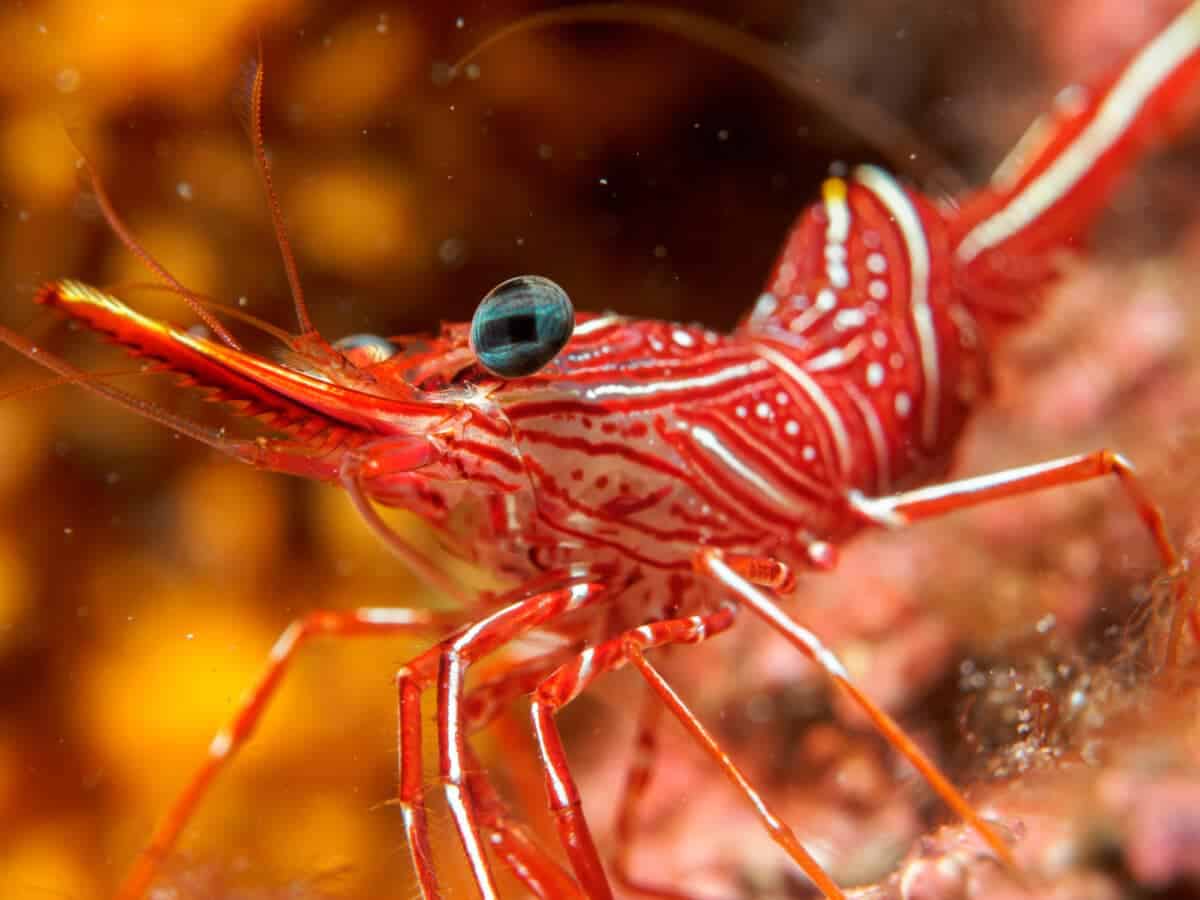
Meet the most incredible creature in the ocean: The Pistol Shrimp! It has an amazing superpower – it can create a loud sound that stuns its prey.
Not only that, but the world’s loudest animal is also one of the smallest creatures living in our oceans today. With its unique and powerful abilities, this fascinating marine arthropod is truly remarkable.
Continue reading to discover not only how such a small creature can make such a loud sound but also their distinctive characteristics and how they employ them to ensure their survival.
Key Points
- The pistol shrimp is known for its ability to create a loud snap or pop sound, stunning its prey.
- Pistol shrimps are easily identifyable, with one oversized claw used for hunting and self-defense.
- They can be found in habitats such as reefs, sandy bottoms, freshwater streams, and rivers.
- Scientists are studying the pistol shrimp’s sound-producing abilities for potential technology applications.
An Overview of the World’s Loudest Animal
| Trait | |
|---|---|
| Average Length | 1.5 inches |
| Claw Snap Sound | Up to 200 decibels |
| Burrow Depth | Up to 3 feet |
| Lifespan | 1-2 years |
| Maximum Speed | 1-2 feet per second |
| Weight | 0.2-0.3 ounces |
| Territory Size | Up to 10 square feet |
| Diet | Small invertebrates, plankton, fish eggs |
| Habitat | Sandy or muddy substrates |
| Conservation Status | Varied (depending on species) |
Introducing the Incredible Pistol Shrimp
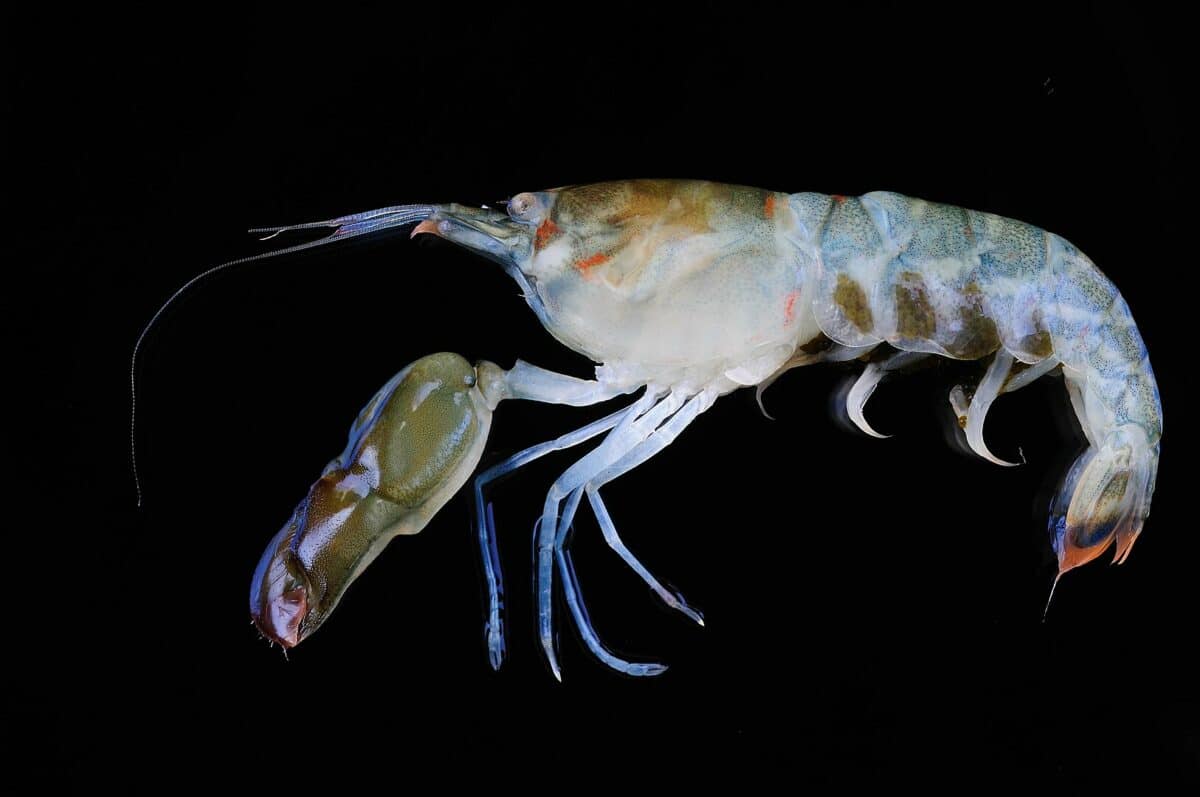
The pistol shrimp is a unique and fascinating species that resides in oceans around the world. They are also commonly known as “snapping shrimp” due to their remarkable ability to create a loud snap or pop sound.
Size and Appearance
- Pistol shrimps are relatively small creatures, with an average length of around 1.2-2 inches (3-5 centimeters.)
- Their most distinctive characteristic, which makes them easily recognizable, is that one claw is significantly larger than the other. This bigger claw is used for hunting and self-defense.
- Many species of pistol shrimp have bright colors, ranging from vibrant reds and oranges to blues and greens.
Habitat and Behavior
- Pistol shrimps are found in various habitats, including reefs, sandy bottoms, freshwater streams, and rivers.
- They are known to be solitary creatures, although some species have been observed living in pairs or small groups.
- Although pistol shrimps may be small, they are recognized for their aggressive and territorial nature. They will defend their territory against other creatures, including other pistol shrimps.
Unique Adaptations
- The pistol shrimp’s oversized claw is not just for show. It is a powerful weapon that can generate a sonic boom – capable of stunning or killing prey.
- When the shrimp closes its claw rapidly, it creates a cavitation bubble that collapses and makes a loud popping sound. This sound is one of the loudest in the ocean, with some species capable of producing sounds of up to 218 decibels. For reference, an ambulance siren typically ranges from 100 to 120 decibels when measured from a distance of about 100 feet.
- The pistol shrimp’s claw also has a second use. It can be used to burrow into the sandy ocean floor, where the shrimp will create a small tunnel for shelter and protection.
The Significance of the Pistol Shrimp
- The ability of the pistol shrimp to produce such a loud sound has been studied by scientists who are interested in its potential applications in technology.
- The sonic boom created by the shrimp’s claw is capable of stunning fish and breaking small pieces of glass. It has led to research into the technology to develop non-invasive medical procedures and weapons systems.
How Does the Pistol Shrimp Make Its Unbelievable Sound?
The pistol shrimp is a fascinating creature that has amazed scientists and marine enthusiasts with its incredible ability to produce an intense sound wave. This ability is due to the unique anatomy of its specialized claw, which has a powerful muscle that allows it to snap the two parts of the claw together at a speed of 60 mph.
When this happens, a blast of water is expelled from the claw at extreme speed and pressure, causing a cavitation bubble that collapses and produces a loud popping sound. This sound wave is so powerful that it can stun or kill small prey, making the pistol shrimp an effective hunter.
Despite the amazing sound produced, the pistol shrimp is not producing sound waves. Instead, it creates a high-intensity water jet that generates sound waves in the surrounding water. This incredible adaptation of the pistol shrimp highlights the unique ways in which animals have evolved to survive and thrive in their environments.
The pistol shrimp impresses us by being the world’s loudest animal – click here to read about an impressive Water Buffalo.
Various Species of Pistol Shrimp and Where They Live
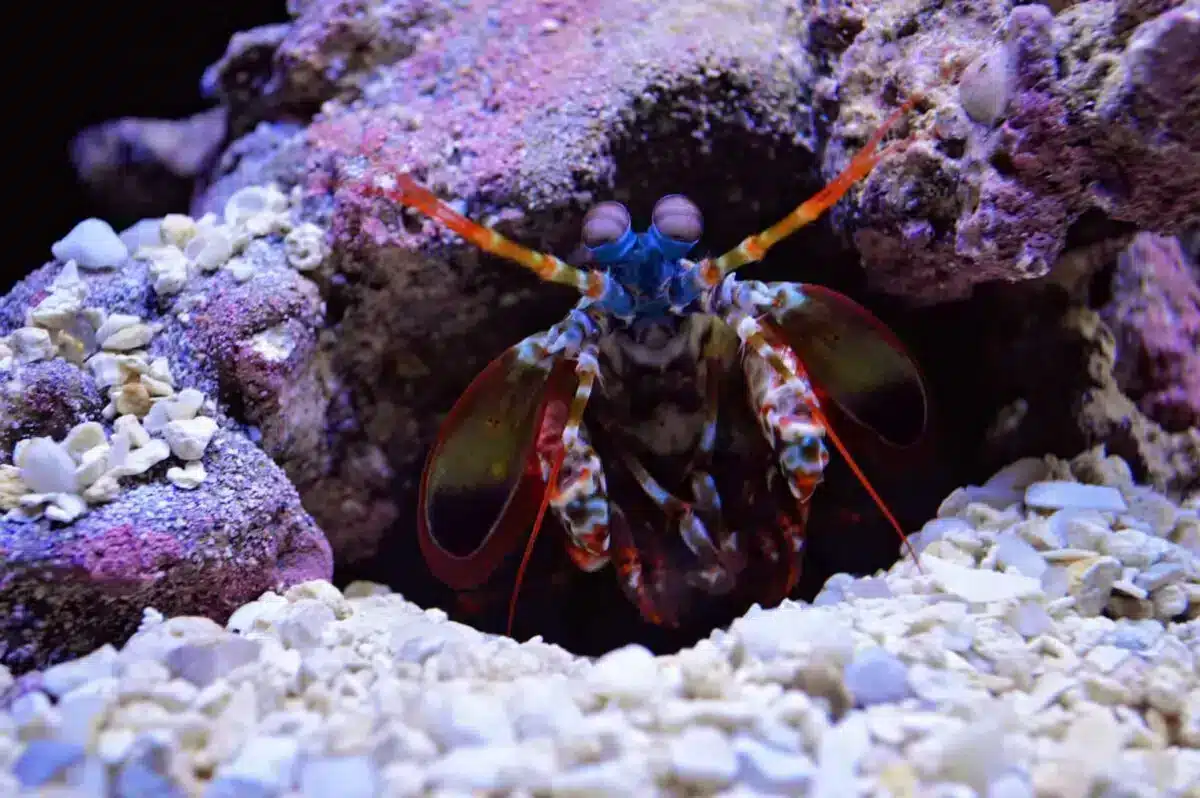
Pistol or alpheid shrimp are a diverse group of marine crustaceans known for their unique and powerful claw. These shrimp are found in marine habitats such as coral reefs, seagrass beds, and sandy bottoms.
Let’s explore some of the various species of pistol shrimp and their unique habitats:
#1 Heterocarpus Ensifer
Heterocarpus ensifer, also known as the spear-handed shrimp, is found in the Indian Ocean and Western Pacific Ocean. These shrimp are known for their distinctive red and white stripes and elongated, spear-like claws. They typically inhabit sandy or muddy bottoms in both shallow and very deep waters.
#2 Alpheus Formosus
Alpheus formosus, commonly known as the banded coral shrimp, is a pistol shrimp species found in the coral reefs of the Indo-Pacific region. These shrimp also have a striking appearance with bright red and white stripes that provide camouflage in the coral reef environment. They can be found in shallow to moderately deep waters.
#3 Alpheus Randall
Alpheus Randall, also known as Randall’s pistol shrimp, is found in the Pacific Ocean. These shrimp are typically found in coral reefs and seagrass meadows, often associated with gobies. They have a red and white striped appearance and a distinctive square-shaped claw.
#4 Alpheus Digitalis
Alpheus digitalis, the snapping shrimp, lives in shallow waters and mangrove swamps in the Caribbean Sea and the Gulf of Mexico. These shrimp have an overall reddish-brown coloration and a distinctive finger-like claw.
#5 Alpheus Macrocells
Alpheus macrocells, commonly known as the long-fingered pistol shrimp, are found in the Atlantic Ocean, from the Gulf of Mexico to the Caribbean Sea. These shrimp have a light blue coloration and a distinctively long, slender claw. They can be found in sandy or rocky areas of shallow to moderately deep waters.
As you can see, each species has distinctive characteristics and habitats, from the spear-handed shrimp to the snapping shrimp. By studying these remarkable creatures, we can gain a deeper understanding of the complexity and diversity of marine life.
The Important Role It Plays In Ecosystems
The pistol shrimp may be tiny, but the benefits gained from a healthy population of this creature can be immense.
First, their ability to create loud snapping sounds with their claws has positively impacted seagrass beds. Research has shown that as a result of the shrimp clicks, the oxygen production in these beds increases, leading to a healthier marine ecosystem.
In addition, the shrimp population is directly linked to the abundance of other marine species. When their numbers are high, the prey is plentiful, which leads to better nourishment and health for the entire marine community.
Furthermore, the pistol shrimp has potential medicinal benefits as their snap produces a bubble that reaches high temperatures and pressure and creates a shockwave that can stun or kill prey. It could be useful in developing new technologies for biomedicine.
In summary, a healthy population of pistol shrimp can have far-reaching benefits for our oceans and our health.
Nesting Behavior and Partnership with Goby Fish
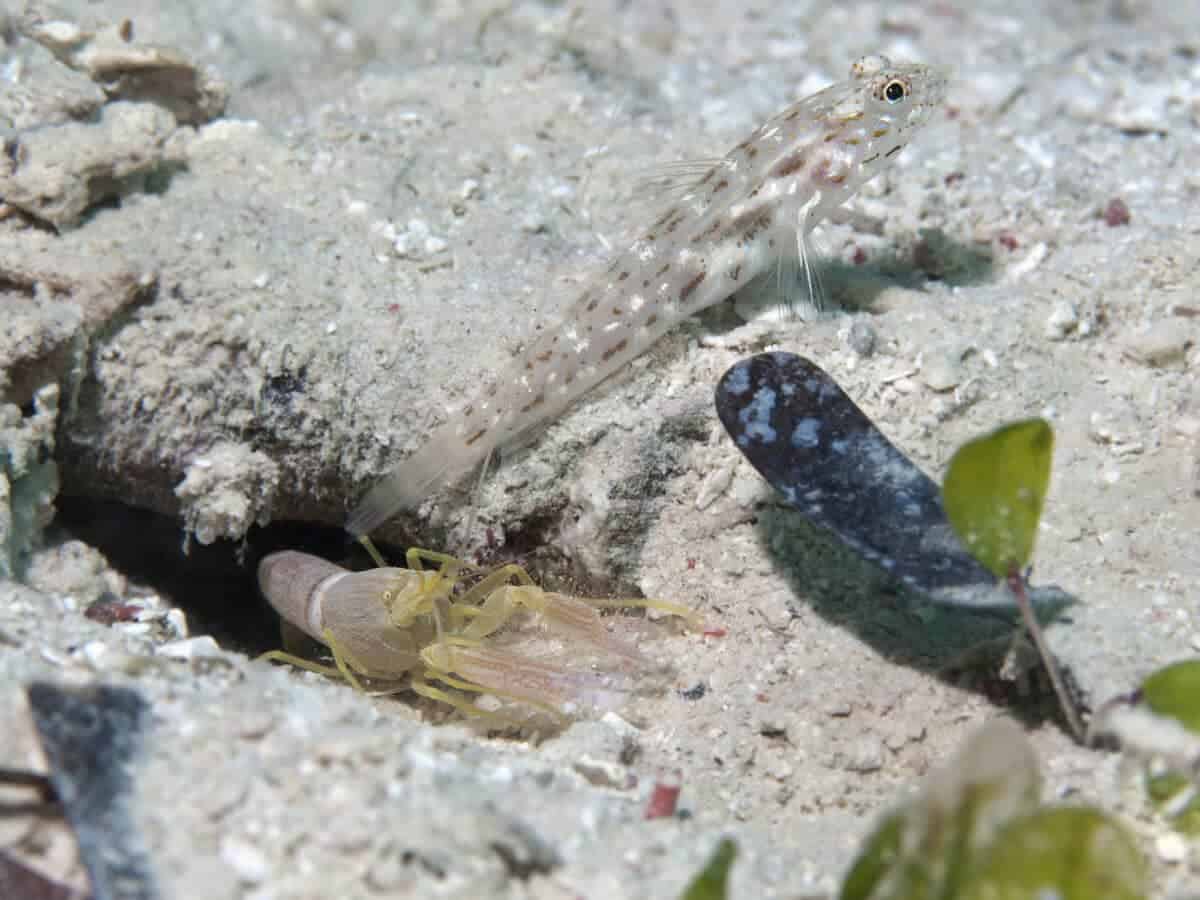
These little critters, measuring about 1.5 inches long, create burrows in the ocean floor using their powerful claws. They dig these burrows to form a safe and cozy home for themselves. It carefully constructs its burrow, creating intricate tunnels and chambers. These burrows provide protection and a place to molt and reproduce.
But here’s the interesting part: pistol shrimp also engage in a social lifestyle. They often share their burrows with gobies, small fish that act as sentinels. The gobies have excellent eyesight and serve as lookout guards, warning the shrimp of any approaching predators.
These partnerships are highly beneficial for both species; this kind of relationship in the animal kingdom is referred to as mutualistic symbiosis. The pistol shrimp provides shelter and protection for the gobies, while the gobies offer early warning signs, enhancing the shrimp’s survival chances.
How We Can Help Protect the Pistol Shrimps’ Ecological Environment
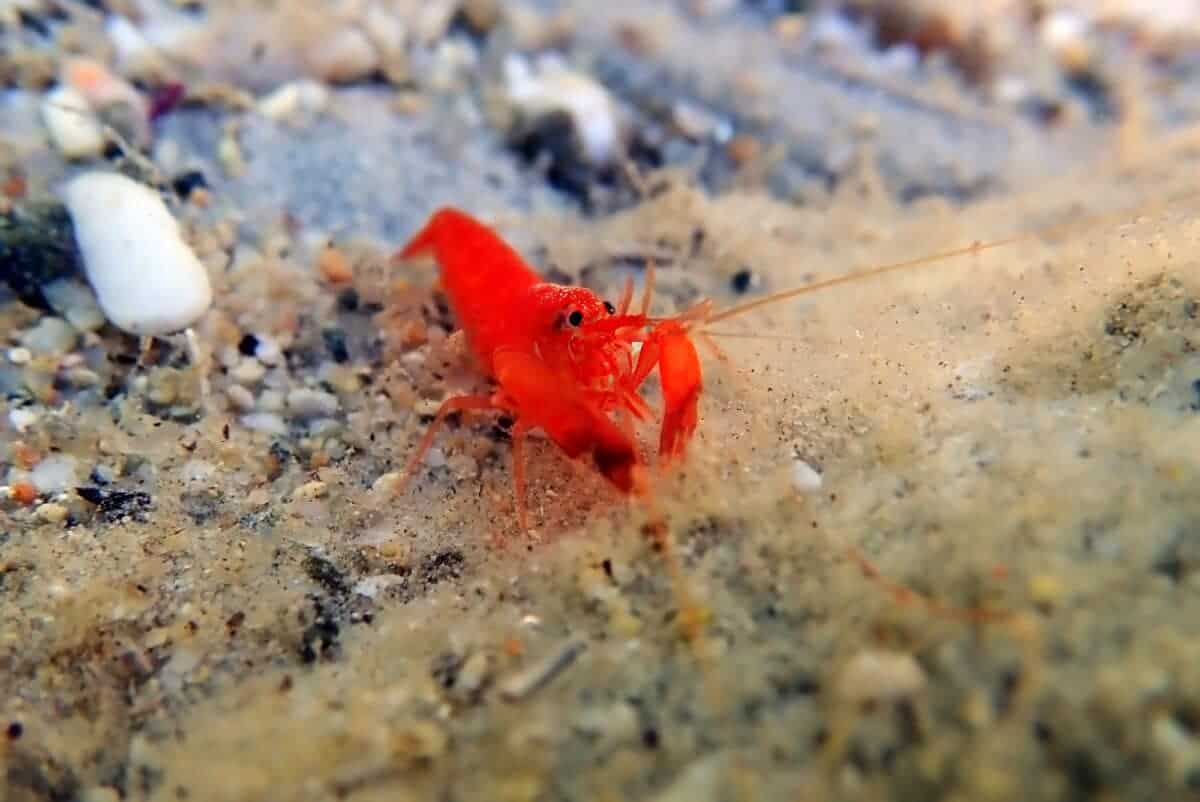
As we continue to learn more about preserving our delicate ecosystems, we must highlight the significance of protecting all marine species – including the pistol shrimp. These tiny but mighty creatures play a vital role in our oceans by helping to maintain the delicate balance of marine life.
However, their habitats are threatened by pollution and overfishing, putting them in danger of extinction. To help protect the ecological environment that the pistol shrimps rely upon, we can:
- Reduce our single-use plastics
- Invest in sustainable fishing methods
- Support organizations dedicated to ocean conservation
- Practice water conservation at home to reduce runoff and pollution that can harm marine ecosystems
- Participate in beach cleanups
- Promote responsible tourism
Through collaboration and proactive measures, we can guarantee that forthcoming generations can witness the enchantment of pistol shrimps and appreciate their vital contribution to our marine ecosystems.
The World’s Loudest Animal: The Bottom Line
From their incredible sensory hearing abilities to stunningly loud snap sounds, the Pistol Shrimp is incredible. While its special superpower may be intimidating for its prey, it’s truly a spectacle for us. Naturally small but mighty and surprisingly beautiful, these amazing marine arthropods prove that size doesn’t always matter.
Likewise, the pistol shrimp’s fascinating relationship with goby fish illustrates how intricately interlinked the animal kingdom is, and how completely different species depend on one another. And above and beyond that, it’s a beautiful reminder that we would be nowhere without our friends that always have our back.
Thank you for reading this article about the world’s loudest animal! Still hungry for animal facts? Read about the mountain lions of California, have your heart melted by this pitbulls display of friendship at a shelter, or get to know Texa’s American alligator.
Join our Forum for free today!


